The multiple PDZ domain protein Mpdz/MUPP1 regulates opioid tolerance and opioid-induced hyperalgesia
- PMID: 27129385
- PMCID: PMC4850636
- DOI: 10.1186/s12864-016-2634-1
The multiple PDZ domain protein Mpdz/MUPP1 regulates opioid tolerance and opioid-induced hyperalgesia
Abstract
Background: Opioids are a mainstay for the treatment of chronic pain. Unfortunately, therapy-limiting maladaptations such as loss of treatment effect (tolerance), and paradoxical opioid-induced hyperalgesia (OIH) can occur. The objective of this study was to identify genes responsible for opioid tolerance and OIH.
Results: These studies used a well-established model of ascending morphine administration to induce tolerance, OIH and other opioid maladaptations in 23 strains of inbred mice. Genome-wide computational genetic mapping was then applied to the data in combination with a false discovery rate filter. Transgenic mice, gene expression experiments and immunoprecipitation assays were used to confirm the functional roles of the most strongly linked gene. The behavioral data processed using computational genetic mapping and false discovery rate filtering provided several strongly linked biologically plausible gene associations. The strongest of these was the highly polymorphic Mpdz gene coding for the post-synaptic scaffolding protein Mpdz/MUPP1. Heterozygous Mpdz +/- mice displayed reduced opioid tolerance and OIH. Mpdz gene expression and Mpdz/MUPP1 protein levels were lower in the spinal cords of low-adapting 129S1/Svlm mice than in high-adapting C57BL/6 mice. Morphine did not alter Mpdz expression levels. In addition, association of Mpdz/MUPP1 with its known binding partner CaMKII did not differ between these high- and low-adapting strains.
Conclusions: The degrees of maladaptive changes in response to repeated administration of morphine vary greatly across inbred strains of mice. Variants of the multiple PDZ domain gene Mpdz may contribute to the observed inter-strain variability in tolerance and OIH by virtue of changes in the level of their expression.
Keywords: Drug tolerance; Gene mapping; Opioid analgesics; Synaptic plasticity.
Figures
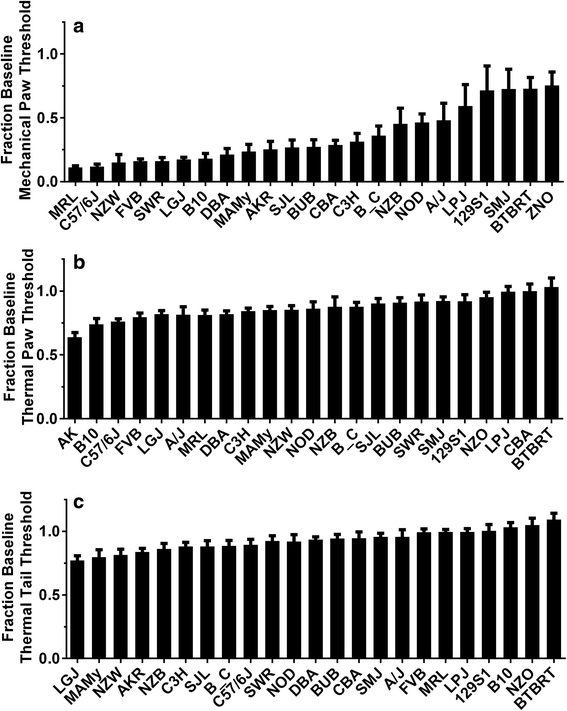
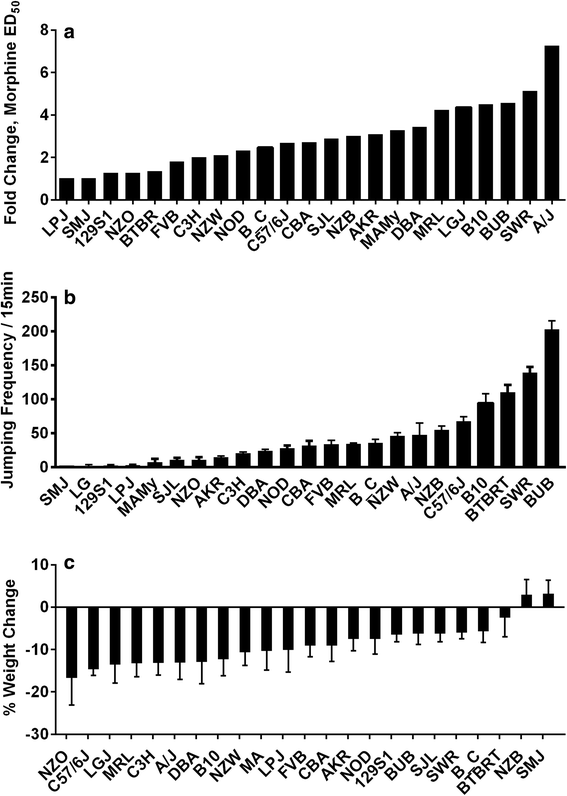
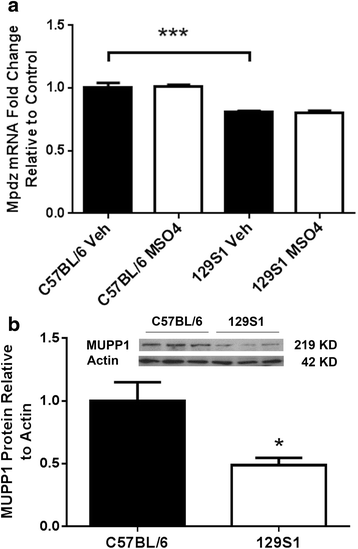
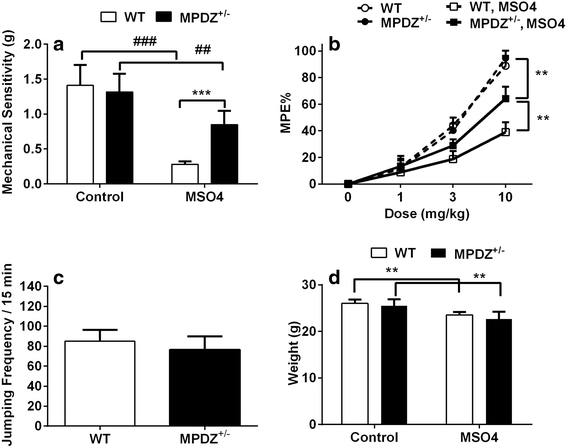
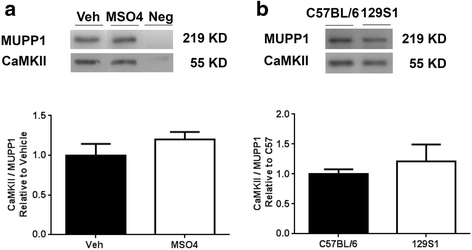
Similar articles
-
Genetic variants of the P-glycoprotein gene Abcb1b modulate opioid-induced hyperalgesia, tolerance and dependence.Pharmacogenet Genomics. 2006 Nov;16(11):825-35. doi: 10.1097/01.fpc.0000236321.94271.f8. Pharmacogenet Genomics. 2006. PMID: 17047491
-
The Netrin-1 receptor DCC is a regulator of maladaptive responses to chronic morphine administration.BMC Genomics. 2014 May 8;15(1):345. doi: 10.1186/1471-2164-15-345. BMC Genomics. 2014. PMID: 24884839 Free PMC article.
-
A genetic analysis of opioid-induced hyperalgesia in mice.Anesthesiology. 2006 May;104(5):1054-62. doi: 10.1097/00000542-200605000-00023. Anesthesiology. 2006. PMID: 16645459 Free PMC article.
-
Opioid-induced hyperalgesia: Cellular and molecular mechanisms.Neuroscience. 2016 Dec 3;338:160-182. doi: 10.1016/j.neuroscience.2016.06.029. Epub 2016 Jun 23. Neuroscience. 2016. PMID: 27346146 Review.
-
Opioid induced hyperalgesia: clinical implications for the pain practitioner.Pain Physician. 2009 May-Jun;12(3):679-84. Pain Physician. 2009. PMID: 19461836 Review.
Cited by
-
Morphine analgesia in male inbred genetic diversity mice recapitulates the among-individual variance in response to morphine in humans.Animal Model Exp Med. 2022 Sep;5(3):288-296. doi: 10.1002/ame2.12234. Epub 2022 Jun 3. Animal Model Exp Med. 2022. PMID: 35656737 Free PMC article.
-
The dark side of opioids in pain management: basic science explains clinical observation.Pain Rep. 2016 Sep 8;1(2):e570. doi: 10.1097/PR9.0000000000000570. eCollection 2016 Aug. Pain Rep. 2016. PMID: 29392193 Free PMC article.
-
Mining the Nav1.7 interactome: Opportunities for chronic pain therapeutics.Biochem Pharmacol. 2019 May;163:9-20. doi: 10.1016/j.bcp.2019.01.018. Epub 2019 Jan 27. Biochem Pharmacol. 2019. PMID: 30699328 Free PMC article. Review.
-
Preconception opioids interact with mouse strain to alter morphine withdrawal in the next generation.Psychopharmacology (Berl). 2024 Jul;241(7):1435-1446. doi: 10.1007/s00213-024-06574-0. Epub 2024 Mar 19. Psychopharmacology (Berl). 2024. PMID: 38503843
-
Neuron Navigator 1 (Nav1) regulates the response to cocaine in mice.Commun Biol. 2023 Oct 18;6(1):1053. doi: 10.1038/s42003-023-05430-9. Commun Biol. 2023. PMID: 37853211 Free PMC article.
References
-
- Centers for Disease C, Prevention CDC grand rounds: prescription drug overdoses - a U.S. epidemic. MMWR Morb Mortal Wkly Rep. 2012;61(1):10–13. - PubMed
Publication types
MeSH terms
Substances
Grants and funding
LinkOut - more resources
Full Text Sources
Other Literature Sources
Molecular Biology Databases

